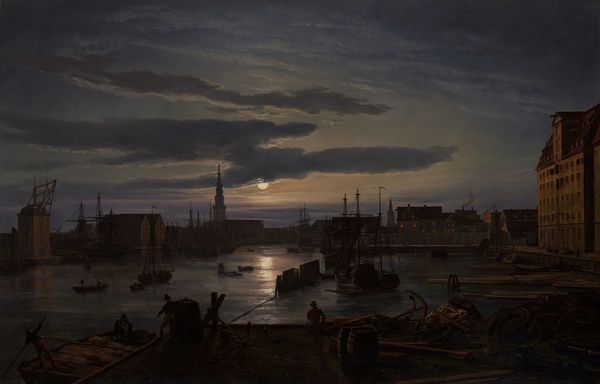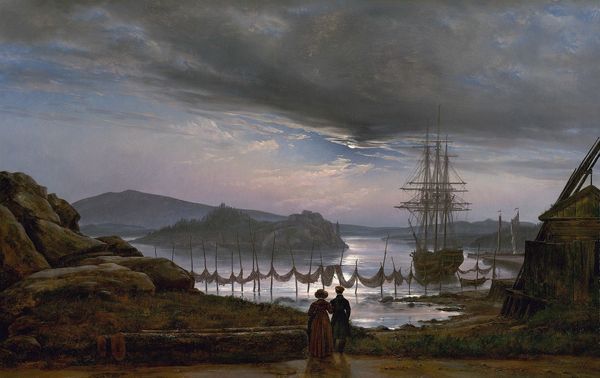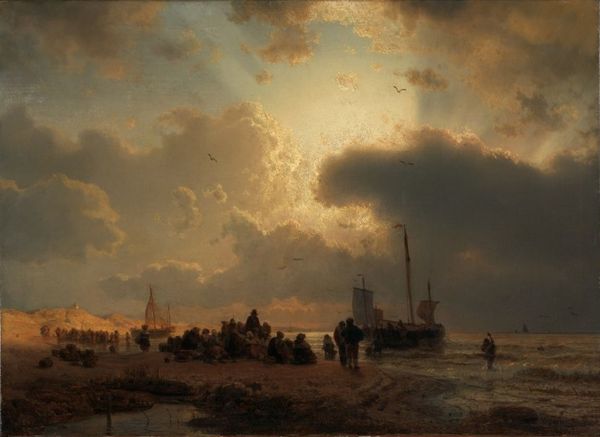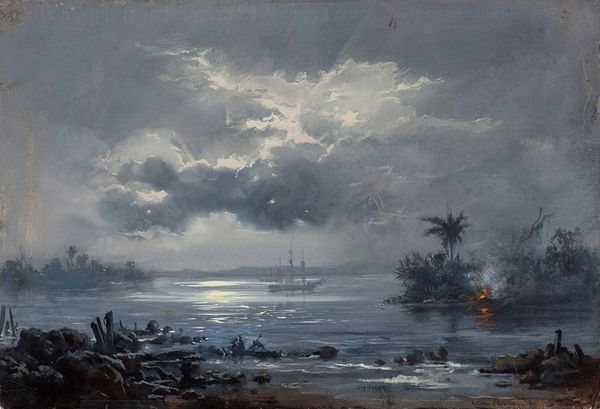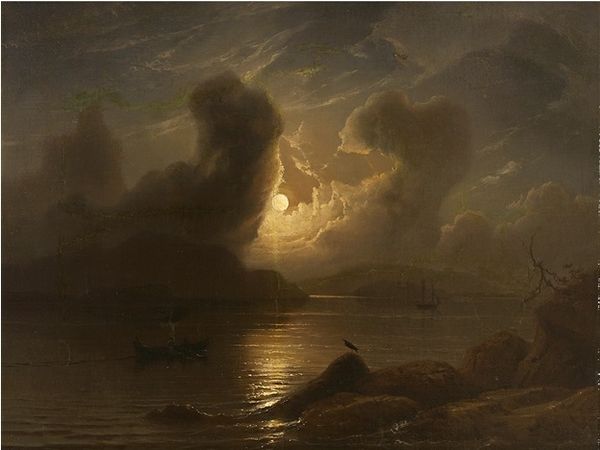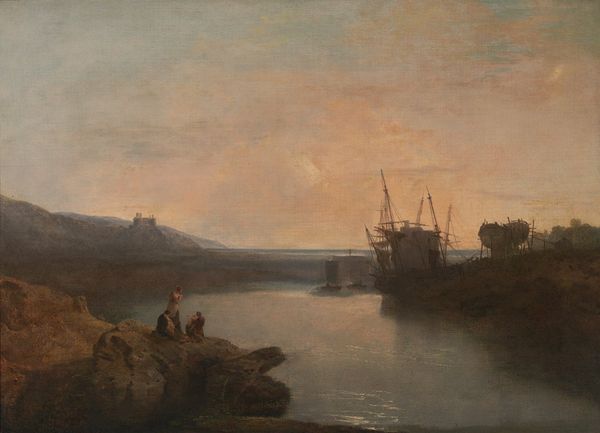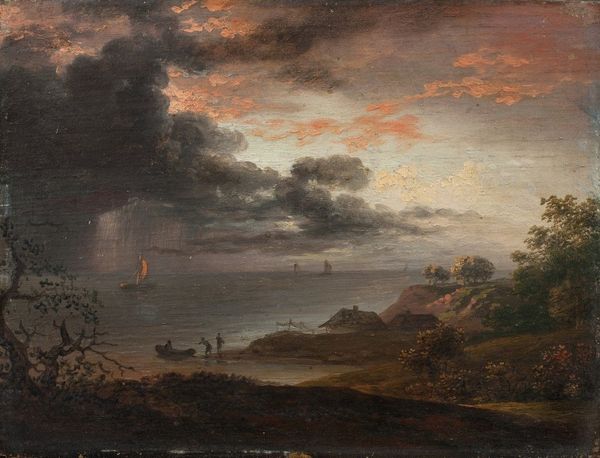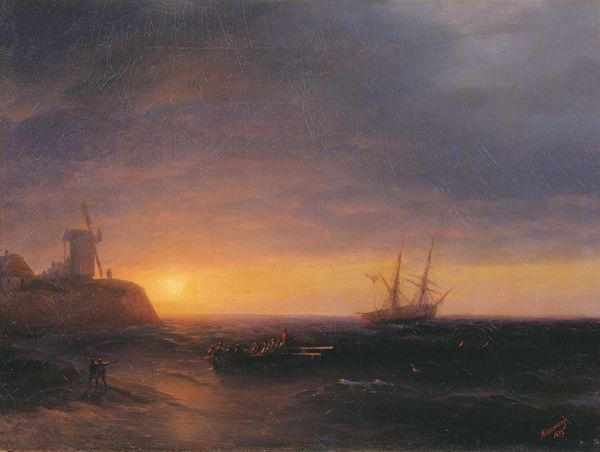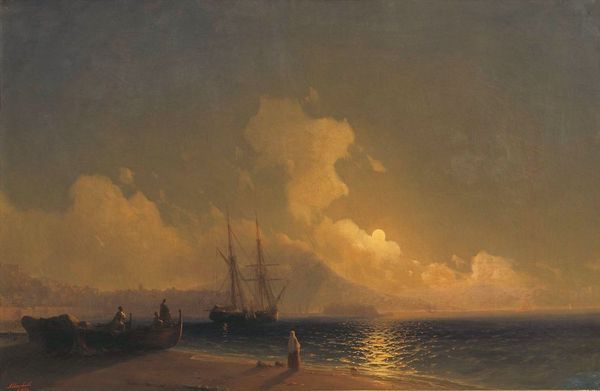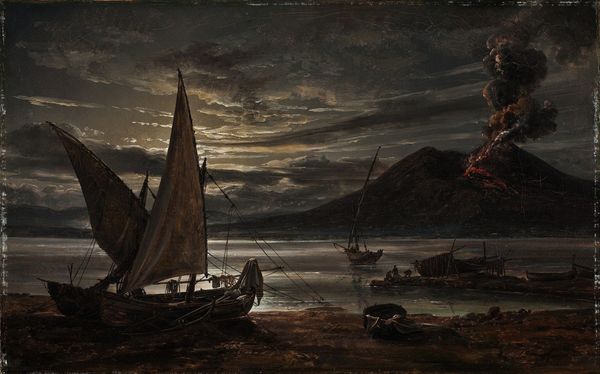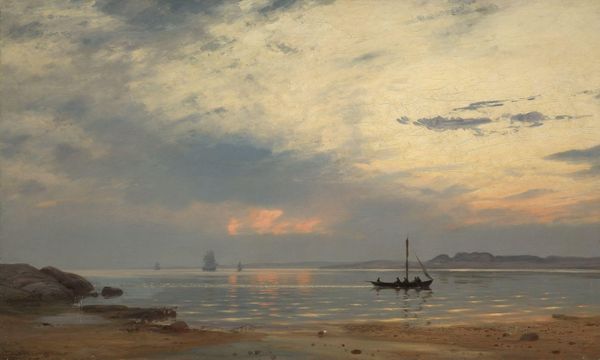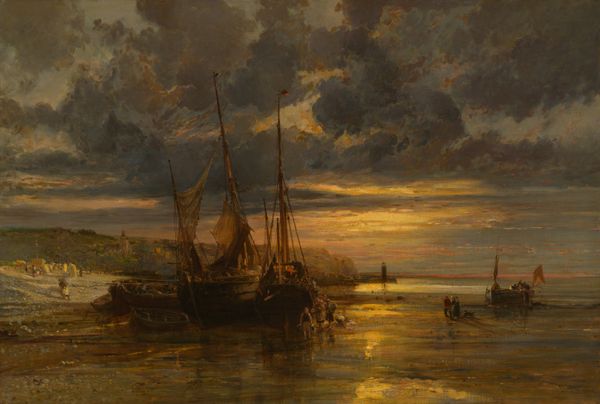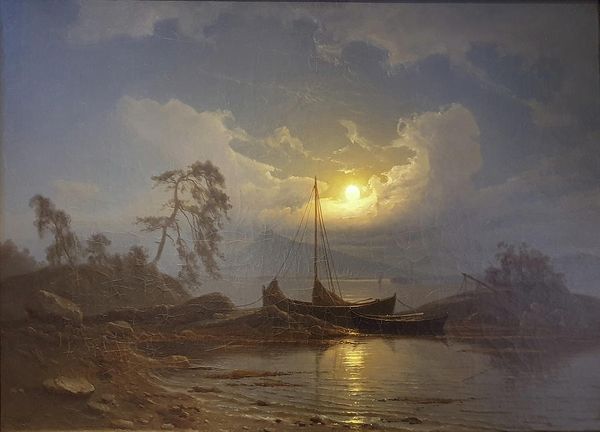
painting, oil-paint
#
painting
#
oil-paint
#
landscape
#
romanticism
#
cityscape
Copyright: Public Domain: Artvee
Art Historian: This painting before us is entitled "Larvik by Moonlight," created in 1839 by Johan Christian Dahl. It’s an oil on canvas. Quite striking, wouldn't you say? Curator: The palette is certainly moody. Almost monochromatic, the varying shades of gray broken by slivers of what may be gold emanating from the moon's reflection on the water. It speaks volumes about the availability, and probably expense, of pigments at the time. Art Historian: Indeed. Dahl, a prominent figure in the Norwegian Romanticism movement, captures a very specific moment in the socio-economic life of Larvik, a coastal town then heavily involved in shipping and trade. Notice the ships at anchor. Curator: And the wood! Look at the carefully rendered timber in the foreground, clearly raw material awaiting processing and distribution. This immediately positions Larvik within the timber trade and speaks to Norway's industrial, resource-dependent beginnings. Dahl even contrasts that industrial timber with the two observing characters seated upon similar unfinished logs. The landscape has directly offered those logs to industry and people alike. Art Historian: He highlights, or, rather, lowlights the social and natural landscape transforming within the rising economic tides of 19th century Norway. This imagery would likely play well in the nationalistic rhetoric, of both the economic and artistic production. I imagine the artwork having strong implications tied to Norwegian identity and history at that moment in time. Curator: Yes, by depicting Larvik with such detailed accuracy—considering the materials readily available— Dahl inadvertently creates a document of labor practices, material availability, and emergent trade routes. These raw materials are the bedrock for societal construction, captured here through Dahl’s meticulous layering of paint. You can just about feel the grit, or envision him struggling in his production to capture that luminance on what may be lower grade linen, based on canvas type and time period. Art Historian: It really makes you ponder the shifting sands of national identity intertwined with artistic vision. This art object truly holds complex visual threads of commerce, society, and representation together. Curator: And those painted brushstrokes serve as lasting, tangible evidence of the artist's labor in translating material resources to visual experience. Art Historian: It gives me much to consider about artistic creation's intersection within national self-definition. Curator: Likewise, for me, in realizing how tangible raw materials shaped not just landscapes but cultural viewpoints of our recent, material past.
Comments
No comments
Be the first to comment and join the conversation on the ultimate creative platform.
